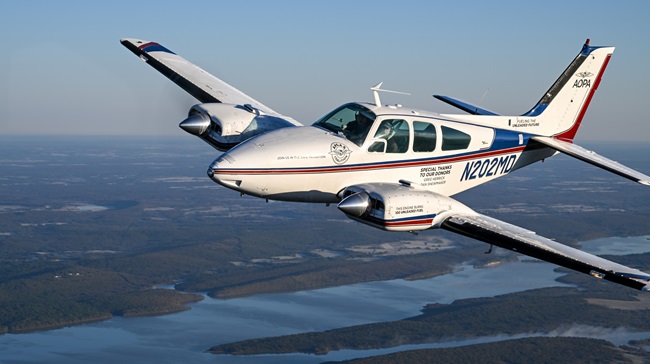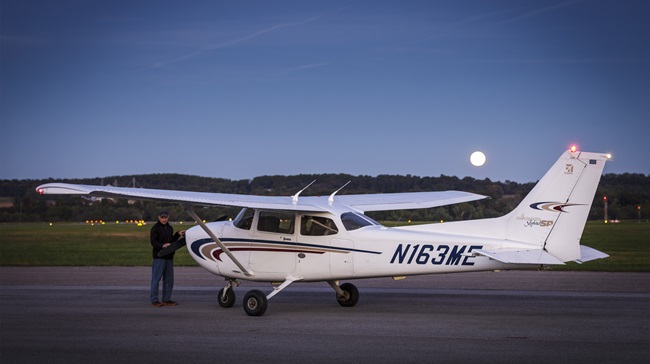 Thinking of the three As of general aviation, Airports is the one that shines the brightest. As I’ve reported over the past couple of months, Aviators and Aircraft have challenges that will require effort by all of us to overcome. The pilot population troubles and the aging fleet problem have no simple or singular solutions. Neither of those matter if we don’t have places from which to take off or land. We are blessed with a multitude of landing facilities in the United States—more than 19,000 on the charts and thousands more that exist off the grid.
Thinking of the three As of general aviation, Airports is the one that shines the brightest. As I’ve reported over the past couple of months, Aviators and Aircraft have challenges that will require effort by all of us to overcome. The pilot population troubles and the aging fleet problem have no simple or singular solutions. Neither of those matter if we don’t have places from which to take off or land. We are blessed with a multitude of landing facilities in the United States—more than 19,000 on the charts and thousands more that exist off the grid.
While the pilot population has been in a serious downward trend for three decades and the GA fleet is aging quickly, the number of landing facilities has remained surprisingly stable, especially in the past decade or so. In 2003, for example, we had 19,581 landing facilities, according to the FAA. At the end of 2014, that number was 19,360; of those, 14,212 were privately owned, private use. The remainder—5,148—were either publicly owned, public use or privately owned, public use. The percentage of public-use airports has remained consistent—38 percent.
And while losing even one landing facility is troubling—because especially near urban areas we will never get it back—given all of the other declining factors surrounding general aviation, the steady number of landing facilities is encouraging.
There was a time in the late 1980s when we were losing about one airport a week to development, poor planning, or neglect. Today it’s less than half that. In some years over the past decade, we’ve seen an actual increase in the number of airports.
Credit goes to AOPA and the FAA for consistent work over the decades to reduce the declines by encouraging communities to do a better job of urban planning around airports and for holding communities to their federal grant obligations instead of allowing closures. AOPA launched its Airport Support Network in 1997 and today has some 2,500 volunteers at public-use airports helping to fend off problems and build community relations that support the facility. We need more, though. Here’s your chance to give back to GA.
Of course, there have been high-profile losses over the years. Meigs Field in Chicago was bulldozed in the middle of the night by Mayor Richard Daley after he spent a decade plotting the airport’s demise, strategically allowing federal grant obligations to expire and moving ownership of the facility to the parks authority, one step removed from direct city government oversight—giving the mayor yet more cover from prosecution. Ohio’s Blue Ash and California’s Rialto are two others that come to mind—cases in which communities made up their minds that they didn’t want or need the airports. Once that happens, it is difficult to sustain a facility, even if it has federal obligations. The current poster child is California’s Santa Monica, where the city government has done an atrocious job of protecting the national asset that is Santa Monica Municipal Airport. AOPA and others have spent decades battling to keep the field open, and it isn’t over yet. Even today, the city council continues to squander taxpayer dollars attempting to close or stifle the federally obligated airport.
So while a few doozies come to mind, they are the exception rather than the norm. Day in and day out, America’s airports soldier on as the on and off ramps to the nation’s aviation network. They create jobs and economic growth, provide open space and recreation, and daily provide starting and ending places for important missions moving everything from emergency supplies in times of crisis to organs for transplant, medevac patients, ag operations, and even moving pets from foster to forever homes.
Every once in a while we get a win that is downright gleeful, such as the one at New Jersey’s Solberg-Hunterdon Airport. For years Readington Township had tried to close or take over the 75-year-old family-owned, public-use facility. The township even tried to use eminent domain. The court battles have cost the airport owners plenty, but this spring a judge wrote a precedent-setting ruling that found in favor of the family and then criticized the government’s efforts, calling them “un-forthright, evasive, untrustworthy, argumentative, lacking credibility and therefore unworthy of belief.” Thank you, Judge Paul Armstrong, for protecting this little patch of Americana for future generations.
With frequent use and constant advocacy by all of us, we can enlighten communities about the value of our airports and their importance to the nation’s transportation system.
Email [email protected]
Follow on twitter@tomhaines29
Editor in ChiefTom Haines has taken off and landed GA airplanes at airports in 46 states. You others, look out. He’s on his way.



